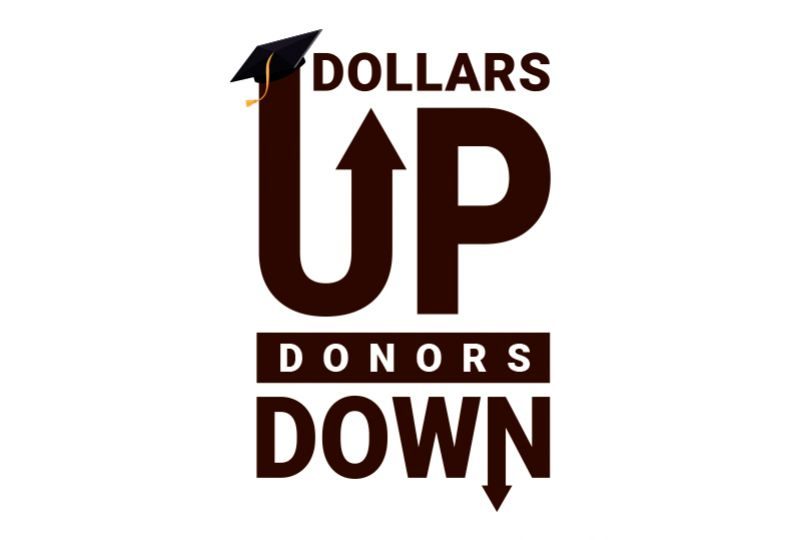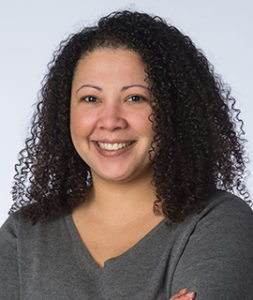
Home » Dollars up, donors down at INW universities
Dollars up, donors down at INW universities
Record-setting gift totals at INW universities have originated from fewer contributors

October 26, 2023
Despite a record-breaking year for donations at some Spokane-area universities, many higher education institutions are facing a decline in donor numbers—a worrying trend for the continued sustainability of major gifts, some university leaders here say.
“You’ll hear this phrase called ‘dollars up, donors down,’” says Stacey Smith, vice president of institutional advancement at Whitworth University. “That’s a national trend not only for higher ed but for philanthropy in general. The number of donor households in this country continues to shrink.”
Whitworth University received $16.2 million from 2,601 donors in 2022-2023, Smith says, an increase of 38% from $11.7 million raised in 2021-2022. The number of donors that gave to Whitworth last year declined 8.5% from the previous year and is about 40% below donor totals from a decade ago.
About 95% of donations to Whitworth are given by 5% of the university’s donor base, compared to 10 years ago when Smith says about 20% of Whitworth’s donor base contributed 80% of donations.
“It’s a trend that’s turning into a major gift world versus a broad-based participation world, and I don’t know what that’s going to mean for the future. It’s not a trend that I like,” says Smith.
Donations also are up at the Washington State University Foundation, which raised $168 million in fiscal year 2023 ended June 30, says Nicole Pratapas, vice chancellor for advancement at WSU Health Sciences, in Spokane.
This was the second consecutive year that WSU set a record for fundraising activity. Donations were up 8.8% from the previous record of $154.3 million achieved in 2022.
In fiscal year 2023, however, over 27,500 donors gave to the WSU Foundation—a 19% decline from the previous year.
The national trend of increased donations given by fewer donors continues in Spokane at the Elson S. Floyd College of Medicine, the WSU College of Pharmacy, the WSU College of Nursing, and the WSU Health Sciences Campus at large.
WSU Health Sciences received $17.3 million in fiscal year 2023, says Pratapas. The number of financial contributions was over 2% higher than in fiscal year 2022, and the number of donors also decreased 5.5%.
Similar philanthropic activity is reported at colleges and universities nationwide, according to a March analysis released by Ruffalo Noel Levitz LLC, a Cedar Rapids, Iowa-based enrollment and fundraising management company for higher education institutions.
The RNL report states that 781 higher education institutions experienced an 11% boost in financial support in 2022 from 2021, even while alumni donor counts steadily decrease.
However, at Gonzaga University, fundraising activity bucks the national trend, and the private Jesuit university reports both a decline in dollars and donors.
At Gonzaga, over 9,300 donors raised $51.1 million in fiscal year 2023 ended May 31, says Stephanie Rockwell, assistant vice president of operations and fundraising strategy at the university.
Gonzaga’s 2022 Advancement Annual Impact Report states that in fiscal year 2022, Gonzaga received $65.1 million in support from over 10,200 donors—a decline of 22% in donations and a 9% drop in the number of donors compared to 2023.
“The donor trend is something that is persistent,” says Rockwell. “We’re seeing donor counts overall reduced year-over-year.”
Gonzaga’s 2023 fundraising activity isn’t alarming to Rockwell, who says the university has seen a resurgence in its donor-retention rate of people who previously gave to the university and continue to contribute in following years.
Gonzaga’s retention rate was 58% in 2023, which is up from 54.5% in 2022, she says.
“That’s a really important number to keep an eye on,” says Rockwell. “Moving that number up is really great for us given the total fundraising activity declined last year.”
Some higher education institutions follow a more flexible approach for their donor-engagement strategies, which have evolved along with technology. For others, donors are likely to respond to time-tested fundraising methods, such as one-on-one talks, which have been the focus of donor engagement efforts at WSU, Pratapas says.
“It’s more of a conversation with individuals about what’s happening at your institution … and seeing if that fits their philanthropic interest area,” Pratapas says. “People give to areas that have really impacted who they are today.”
Rural health care delivery and scholarships are popular with WSU donors, says Pratapas. For example, she says the WSU College of Medicine partners with Spokane-based nonprofit Bavihealth, which does business as Range Community Clinic, to operate two mobile clinics that serve rural Washington state communities and are completely funded by philanthropy..
Pratapas says donors generally have given support to the university because of their personal connections more than just because they’re alums.
“What’s been interesting to see in the past year is that donors are really looking for programs and projects that impact either disease state, climate change, or political policies,” says Pratapas.
At Gonzaga, Rockwell says she’s noticed during her 15-year tenure at the university a shift in many donors’ communication preferences, with strategies involving less telefunding and direct-mail outreach.
About four years ago, Gonzaga revamped the telefund program into a general student outreach program that offers a mix of fundraising methods with a greater emphasis on delivering video messages, text campaigns, and handwritten notes.
“It’s amazing how quickly things change,” says Rockwell. “(For) any entity that’s trying to get their message out there and capture people’s attention, they’ve had to really deal with how people change and consume their information.”
For example, Gonzaga’s direct-mail response rates have declined to about 4% from 9%, Rockwell says.
“We still send mailers, and that’s a great way to get your message out and to speak to your constituents,” she says. “But we also know it has to be buffeted with many other strategies now.”
Gonzaga’s donors, who are alums, parents of alums, community members, and fans, respond to personalized communications and messages of gratitude more than generic or common messaging.
“They expect us to know them. So the more we can marry technology and tools with the information that we know … it’s going to be more authentic,” says Rockwell.
Whitworth’s 18-person university advancement department also has had success engaging donors with creative ways of expressing gratitude.
“You have to be very strategic and thorough in how you decide to engage a broad-based constituency. It’s just harder now,” Smith says. “If I had all the money in the world to hire more staff, I would hire more stewardship people immediately, because that’s typically what leads to additional donations.”
Looking ahead, Smith says she’d like to explore new predictive modeling software that has the potential to reach a larger donor pool with targeted projects and programs that align with an individual’s characteristics. She says that for now, the Whitworth advancement team will continue to connect donors manually to matching causes.
Smith says she expects the number of households that donate funds will continue to decline.
“Unless a smaller group of people can continue to carry most of the weight of the water, I don’t know what the future holds in that regard, but I wonder sometimes about that trend,” Smith says.
Latest News Up Close Banking & Finance Education & Talent
Related Articles
Related Products





![Brad head shot[1] web](https://www.spokanejournal.com/ext/resources/2025/03/10/thumb/Brad-Head-Shot[1]_web.jpg?1741642753)